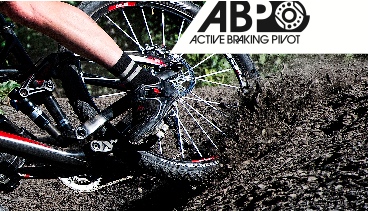The saga of the concentric pivot suspension system continues today, with Trek’s announcement that they have been awarded a US patent for their Active Braking Pivot rear suspension design, which attempts to effectively separate braking and suspension forces by using a concentric pivot around the rear axle.

There was speculation at the time about the implications of the Split Pivot patent on Trek’s use of ABP but we were told that Trek were well aware of Dave Weagle’s design and patent and would continue to manufacture ABP bikes. The award of the patent should put to rest any comment about ABP’s difference to Split Pivot.
Active Braking Pivot has been a feature on Trek’s range of bikes since 2007, and is currently found on eight Trek and Gary Fisher suspension platforms. Dave Weagle’s Split Pivot patent was also publicly launched in 2007 but only became available on bikes from a variety of manufacturers in 2010.
Trek say that the award of their patent has broad implications, as it “covers a concentric pivot in combination with much more sophisticated and varied types of rear suspension designs”.
Of course, in both patents the concentric pivot element is actually a small part of a much broader overall design that is patented – we suggest you have a look through the Split Pivot patent available on their website HERE. It’s not particularly light reading…
Invented by suspension engineers James Colegrove, Dylan Howes, and Jose Gonzalez, Trek say that the Active Braking Pivot patent is: “…further proof of Trek’s commitment to leading the world in mountain bike technology”
Comments (13)
Leave Reply
Post Comment
You would have thought putting the axle concentric to the pivot would be the first thing a bike designer would try.
It either means that there must be significant differences… or that the US patent system is broken.
‘How about Patent No. 5,443,036–a method of exercising a cat with a laser pointer? Or Patent No. 6,960,975–an antigravity perpetual-motion device that defies the laws of physics?’
http://news.cnet.com/Fixing-a-broken-patent-system/2010-1014_3-6212615.html#ixzz168fj5uye
DW was first to file so his patent is still valid but Trek have prior art ie they have evidence that they thought of it first or at least at the same time. I think both patents can run concurrently.
so what happens if someone wants to buy the rights to use a concentric rear pivot? Who do they pay the royalties to? DW and Trek?
way i understand this (from my dad patenting stuff – in the UK) is that you can only patent something before it is marketed and made public. either the american patent system doesn’t work this way (i thought it did though) or someone has been telling porky-pies.
Trek say that the Active Braking Pivot patent is: “…further proof of Trek’s commitment to leading the world in mountain bike technology”, or litigation. Which ever pays best.
> way i understand this (from my dad patenting stuff – in the >UK) is that you can only patent something before it is >marketed and made public. either the american patent >system doesn’t work this way (i thought it did though) or
> someone has been telling porky-pies.
My understanding is that you need to FILE the patent before making the invention public. Actually being granted the patent usually takes years and involves investigation to see if the innovation is truly novel and that there isn’t prior art. I suspect they both filed in 2007.
“You would have thought putting the axle concentric to the pivot would be the first thing a bike designer would try.”
it was, in the late 19th century.. and he got a patent on it.
ABP / split pivot / whatever.
it’s little more than a clever way of sidestepping the speccy FSR patent.
Obviously patent lawyers can’t know everything but go back to 96 and a not very well known bike maker did a bike with a concentric pivot axle…..and made it public wonder if prior art matters when the lawyers come knocking
both these patents are for a whole suspension system (not a concentric pivot.!)..
they are both different systems, that share a common piece.
the Crestone 96 bikes were referenced in one of the axle-pivot related patents.
A patent is worthless until challenged and tested in court – most don’t stand up to any real scrutiny. Getting it filed in the first place is the easy bit…….